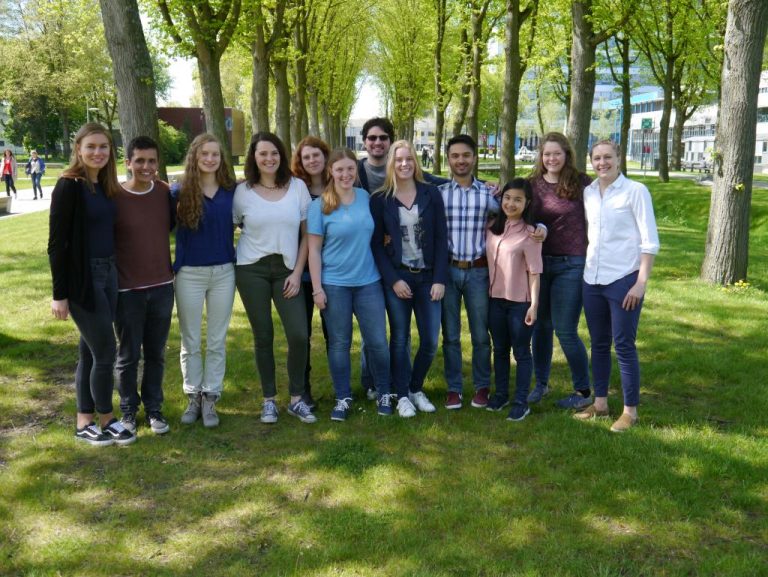The 2018 iGEM team has developed a new concept to detect modified DNA in athletes. It will compete against 340 teams at the International Genetically Engineered Machine (iGEM) competition in Boston in October.
iGEM laboratory at the faculty of Applied Sciences. (Photo: Maria Rubal)
Gene doping is the hypothetical addition of genes to the body to enhance an athlete’s performance. The new genes should produce proteins to improve a person’s physical characteristics, such as muscle growth or production of red blood cells (responsible for carrying oxygen).
To modify a person’s DNA, a gene is integrated into a virus and injected into the body through the bloodstream. The virus, which has no additional effect on the body, carries the gene into the cell.
No evidence
The World Anti-Doping Agency (WADA) banned gene doping as early as 2003. There is no evidence that athletes have used this practice, but it could soon become a reality as gene therapy techniques are already used in hospitals.
WADA is considering asking athletes to sequence their whole genome before competitions to detect gene doping. It would be effective, but very costly, and it could imply breaking privacy regulations. The IGEM team has come up with a much more efficient solution to detect modified DNA by selecting only the relevant genes.
Detect genes
What makes gene doping so hard to detect is that proteins created by added genes are very similar to native ones. The team will exploit the slight difference in the DNA of these proteins. Original genes contain both exons, parts of DNA with coding, and introns, non-coding sections. Added genes contain only exons, as introns are eliminated to reduce the size of the gene.
The team’s idea is to detect genes where introns have been removed and sequence only these. For this purpose, they have designed a protein that can recognise genes without introns, the hallmark of doping DNA. This protein signals the sequencing of these fragments to start . Instead of the whole genome, only the suspect parts are sequenced to discard or verify gene doping.
‘We’re the first team to work on gene doping detection’
The team will try to prove this method in the laboratory before presenting it at the biggest international contest in synthetic biology, the iGEM competition, in Boston in October.
The goal of the iGEM teams is to find a socially relevant problem which can be tackled using DNA engineering and develop a solution. “We are the very first team in ten years to work on gene doping detection,” explains the team’s relations manager, Susan Bouwmeester, quite an achievement considering iGEM has been going for more than ten years.
This year’s team consists of twelve people, most of them master students from the Life Science and Technology programme, and a Nanobiology bachelor student. After last year’s success, with TU Delft winning the Grand Prize, the new team feels the pressure. But it can also learn from last year’s winners. “They focused on human practices and ethical aspects, not only the scientific part, and they won.”


iGEM team 2018. (Photo: iGEM TU Delft)
Maria Rubal / science editor



Comments are closed.